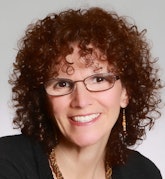
Radiology these days is a far cry from the cushy lifestyle of yesteryear. With 24/7 services, teleradiology, a tight job market, and high volumes, some people find themselves working harder and more grueling hours than during training.
The literature is filled with studies documenting the negative effects of sleep deprivation and shift work. This poses a potential health risk to workers and, by the nature of our jobs, the patients we serve.
How are radiologists managing these changing sleep cycles? Is there a best approach to honor the body's natural rhythm and minimize any physical/mental health effects of sleep disturbance? What can we do to address insomnia?
For this article, I spoke with several radiologists about their different sleep management strategies for working overnight shifts. I also spoke with Dr. Ilene Rosen, an associate professor of clinical medicine in the division of sleep medicine at the University of Pennsylvania and a member of the American Academy of Sleep Medicine's board of directors, for suggestions on how to support the body during shift work. Below, I offer tips for good sleep hygiene, irrespective of your schedule.
Varying schedules
Currently, there is no standard for overnight shifts in radiology, with schedules varying from seven nights on/14 nights off to multiple sporadic overnights scattered throughout the month alternating with evening and day work. In addition, overnight shift lengths seem to vary from seven to 12 hours, and the volume of work can range from consistently grueling to moderately busy with some downtime.
I spoke with radiologists out of training from different backgrounds to find out how they handle the shifts and what works for them. The variety in the responses speaks to the bioindividuality of sleep.
 Dr. Stacey Funt.
Dr. Stacey Funt.Some felt their best when splitting sleep into a few hours before and then four to six hours after the shift. This was the most common scenario for people working sporadic overnights. One radiologist working five nights on/two off for nine hours at a stretch said he was able to function on a four- to five-hour nap each afternoon and would "make up" sleep on his days off.
Another radiologist said he sleeps for eight hours straight following his shift. He can easily adjust to a different routine without insomnia, even after ingesting caffeine. However, he was more the anomaly, as most people felt the greatest challenge was on the switch day.
Another radiologist also was able to sleep a straight seven hours after her consecutive night shifts, although she would use Benadryl to load up on sleep at the start and split sleep at the end of the cycle to get back in sync with the day world.
While some said it was better to do a few nights in a row rather than sporadically, others said they needed the next day to catch up on sleep and would prefer not to do a stretch. There was one radiologist who could not tolerate the overnights and made arrangements with colleagues to pay out of pocket to switch out of the shifts.
When asked about noticeable changes in their health, no one reported any apparent medical problems, although a few commented on mental health effects. Grogginess was the most common report for sporadic shift workers on the day after work, with a decreased ability to focus.
One radiologist noted changes in his affect from the isolation of working the night shift at the hospital. He reported inappropriate emotional reactions in social situations, which resolved after he switched to reading from home.
Another radiologist who worked only nights also reported negative emotional effects due to isolation. Yet, on a positive note, he actually felt less stressed compared to his last arrangement because he was not privy to any of the group gossip. In addition, he was able to arrange his home office to support physical movement and was taking better care of himself during the shift than he ever had.
There was a divide in reported stress level between those who were happy with their arrangement versus those who were unhappy yet worked the schedule out of necessity. The most positive feedback was from the seven-on/14-off group or those who worked part of the evening, such as from 6 p.m. to 2 a.m. The female radiologists I interviewed also often had the extra challenge of managing childcare. The difficulty of arranging night care for children and interrupted sleep due to daytime childcare needs added a level of stress and sleep disturbance not reported by the male radiologists.
Sleep strategies
The physiology of sleep is understood as two separate processes that interact and balance each other. We have a homeostatic drive for sleep and a circadian drive for wakefulness, which both can be affected by genes and external factors.
Experts agree that, on average, adults need seven to nine hours of sleep. When asked about night shifts, sleep specialist Rosen said, "The data clearly show that human beings are not nocturnal. That being said, it takes time and effort to maximize performance on night shifts. If you can't maintain a night schedule on your days off, which is preferable from a biological standpoint, then the focus needs to be on behavioral aspects before, during, and after your shift."
She advises that people consider sleep as important to their body as diet and exercise. Here are some of her suggestions:
- Know your own body. People have variable responses to shift work, including rotating and extended periods of night shift. Before you begin shift work, know how much sleep you need to function well.
- Get the right amount of sleep for your body. If possible, preload on sleep before your night shift. While a full seven to nine consecutive hours of sleep is always preferable, it is OK to split sleep between pre- and postshift slumber, but add up the hours and be sure it's enough. Six hours seems to be the cutoff for poor performance. If you can't sleep longer after your shift, then set your naptime back an hour or two before your shift.
- Avoid caffeine, if possible. If you must, ingest caffeine only at the beginning of the shift.
- After your shift, try to avoid ambient lighting if you are going to sleep within the next three hours. Light stimulates melatonin secretion and enhances the circadian drive for wakefulness. If you are working in the hospital, wear dark sunglasses during your commute home and consider black-out shades for the rooms you work and sleep in. Avoid any computer screens after your shift and before sleep. The blue light emitted from the screen can be similar to ambient lighting. For those really struggling, there is technology that changes the ambient lighting of the computer screen over time, such as f.lux. (Of note, Rosen is not aware of any research assessing the effects of this type of technology on film interpretation, and this should be evaluated prior to use during work.)
If you are still struggling after adhering to good sleep practices, you may have a sleep disorder and should consult a sleep specialist.
It's generally thought that schedule changes have a greater effect on the body when you are older; however, Rosen said this might not necessarily be the case. "It may be that younger people are less likely to identify this as an issue," she said. "Also, people most at risk for making mistakes are the newest learners, and experience of the practitioner should be considered when evaluating how sleep affects performance."
Even if we're not working overnight shifts, we may all struggle at some point with insomnia and the effects of sleeplessness.
I also offer my clients some additional tips:
- Don't eat a big meal before going to bed.
- Develop a wind-down routine before bed.
- Keep your bedroom cool (65° to 72°), quiet, and dark.
- Engage in routine self-care, including exercise and healthy eating.
- Manage stress; breathing exercises, guided meditations, and particular stretches may aid in sleep.
Here's wishing you all a good night's (or day's) sleep.
Dr. Stacey Funt is a board-certified radiologist and a health and wellness coach. She is the founder of Lifestyle Health, offering personal health coaching, consulting, and education about lifestyle medicine to "bring self-care to healthcare." Dr. Funt also works part time as a radiologist in New York.
The comments and observations expressed herein are those of the author and do not necessarily reflect the opinions of AuntMinnie.com.



















